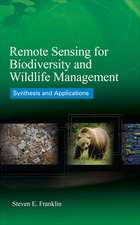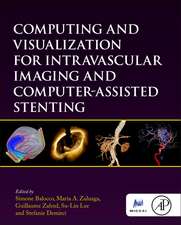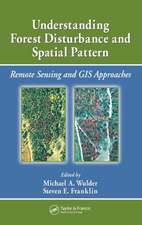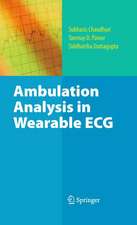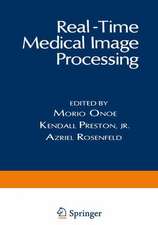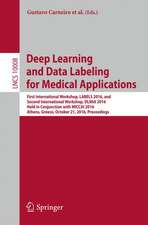Remote Sensing of Forest Environments: Concepts and Case Studies
Editat de Michael A. Wulder, Steven E. Franklinen Limba Engleză Paperback – 14 oct 2012
Remote Sensing of Forest Environments: Concepts and Case Studies is designed to meet the needs of a professional audience composed of both practitioners and researchers. This book is also suitable as a secondary text for graduate-level students in Forestry, Environmental Science, Geography, Engineering, and Computer Science.
| Toate formatele și edițiile | Preț | Express |
|---|---|---|
| Paperback (1) | 1455.24 lei 6-8 săpt. | |
| Springer Us – 14 oct 2012 | 1455.24 lei 6-8 săpt. | |
| Hardback (1) | 1465.32 lei 6-8 săpt. | |
| Springer Us – 30 apr 2003 | 1465.32 lei 6-8 săpt. |
Preț: 1455.24 lei
Preț vechi: 1819.04 lei
-20% Nou
Puncte Express: 2183
Preț estimativ în valută:
278.46€ • 291.33$ • 231.32£
278.46€ • 291.33$ • 231.32£
Carte tipărită la comandă
Livrare economică 02-16 aprilie
Preluare comenzi: 021 569.72.76
Specificații
ISBN-13: 9781461350149
ISBN-10: 146135014X
Pagini: 556
Ilustrații: XV, 519 p.
Dimensiuni: 155 x 235 x 29 mm
Greutate: 0.77 kg
Ediția:Softcover reprint of the original 1st ed. 2003
Editura: Springer Us
Colecția Springer
Locul publicării:New York, NY, United States
ISBN-10: 146135014X
Pagini: 556
Ilustrații: XV, 519 p.
Dimensiuni: 155 x 235 x 29 mm
Greutate: 0.77 kg
Ediția:Softcover reprint of the original 1st ed. 2003
Editura: Springer Us
Colecția Springer
Locul publicării:New York, NY, United States
Public țintă
Professional/practitionerCuprins
Section 1: Data collection and pre-processing.- 1. Remote sensing of forest environments, Introduction. The transition from theory to information.- 2. Selection of remotely sensed data.- 3. The roles of aerial photographs in forestry remote sensing image analysis.- 4. Indirect measurement of forest canopy structure from in situ optical sensors.- 5. Accuracy assessment of maps of forest condition: Statistical design and methodological considerations.- Section 2: Common methods for data processing and information generation.- 6. Geometric correction of remotely sensed images.- 7. Radiometric image processing.- 8. Per-pixel analysis of forest structure: Vegetation indices, spectral mixture analysis and canopy reflectance modeling.- 9. Extracting individual tree information: A survey of techniques for high spatial resolution imagery.- 10. Rationale and conceptual framework for classification approaches to assess forest resources and properties.- 11. Remote sensing of forests over time: Change types, methods, and opportunities.- Section 3: Case studies illustrating methods and applications for remote sensing of forests.- 12. National scale forest information extraction from coarse resolution satellite data, Part 1. Data processing and mapping land cover types.- 13. National scale forest information extraction from coarse resolution satellite data, Part 2. Forest biophysical parameters and carbon.- 14. Regional forest land cover characterisation using medium spatial resolution satellite data.- 15. Modeling forest productivity using data acquired through remote sensing.- 16. Experiences in field data collection: In support of land use and land cover change classification in boreal and tropical environments.- 17. Estimation of foliar chemistry of western hemlock using hyperspectral data.- 18. Using georeferenced large-scale aerial videography as a surrogate for ground validation data.- 19. Tree and canopy height estimation with scanning lidar.- 20. Remote sensing of forest environments, Conclusions. Challenges and opportunities.
Recenzii
"All chapters can easily be read as stand-alone papers. Some of the chapters may serve as excellent teaching material in application oriented training[...] Readers who are interested in remote sensing based data provision on forest and forest resources will find in this book a well done blend of scientific and application oriented papers and an extremely useful reference."
(Forstarchiv, 75:2 (2004)
(Forstarchiv, 75:2 (2004)

